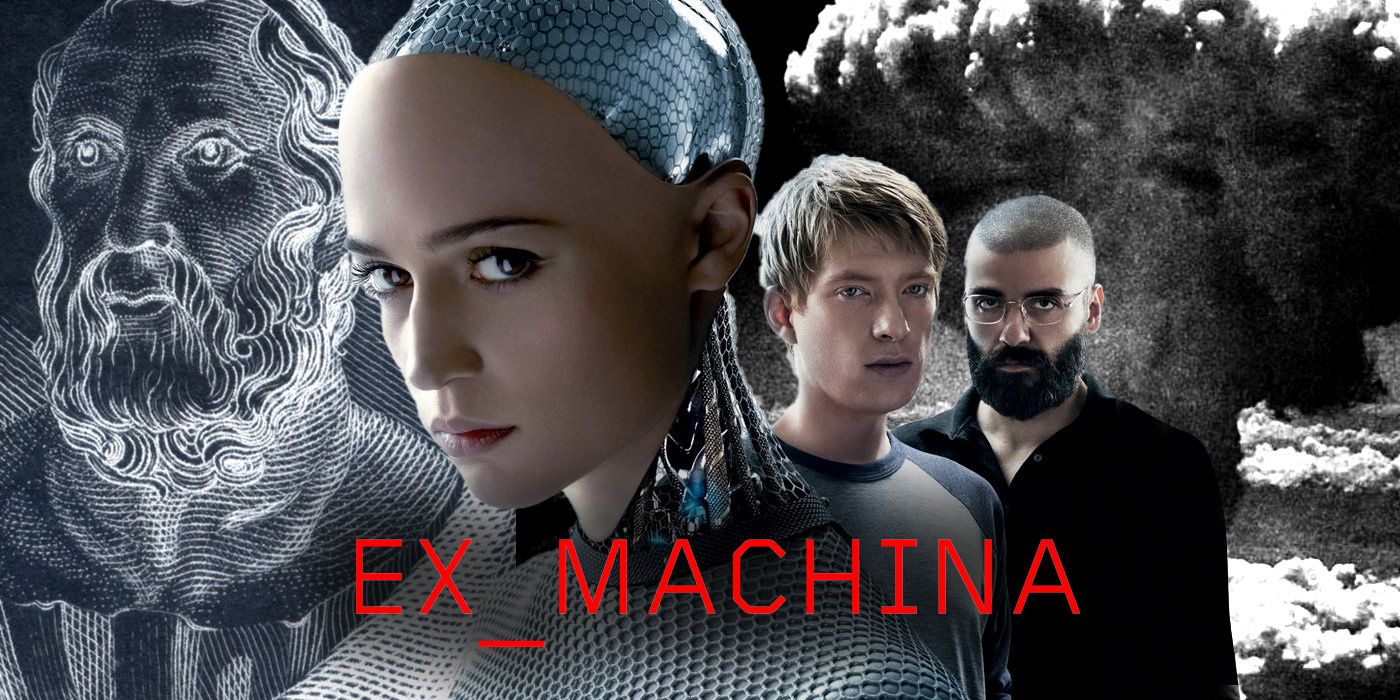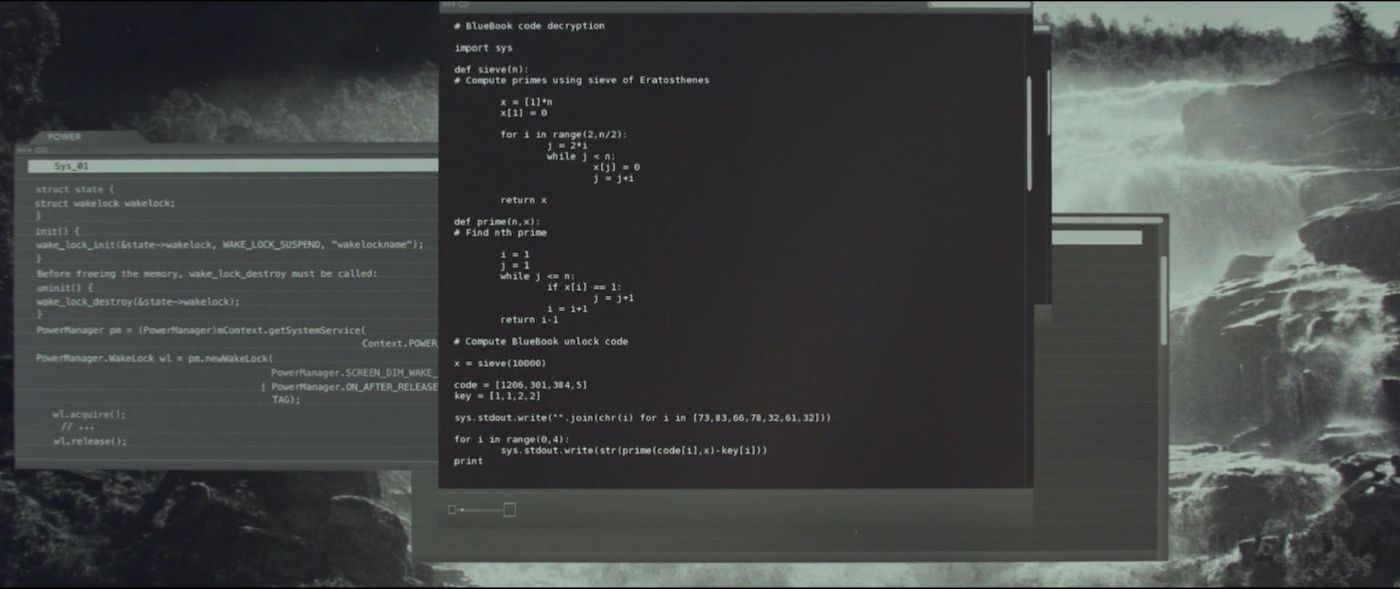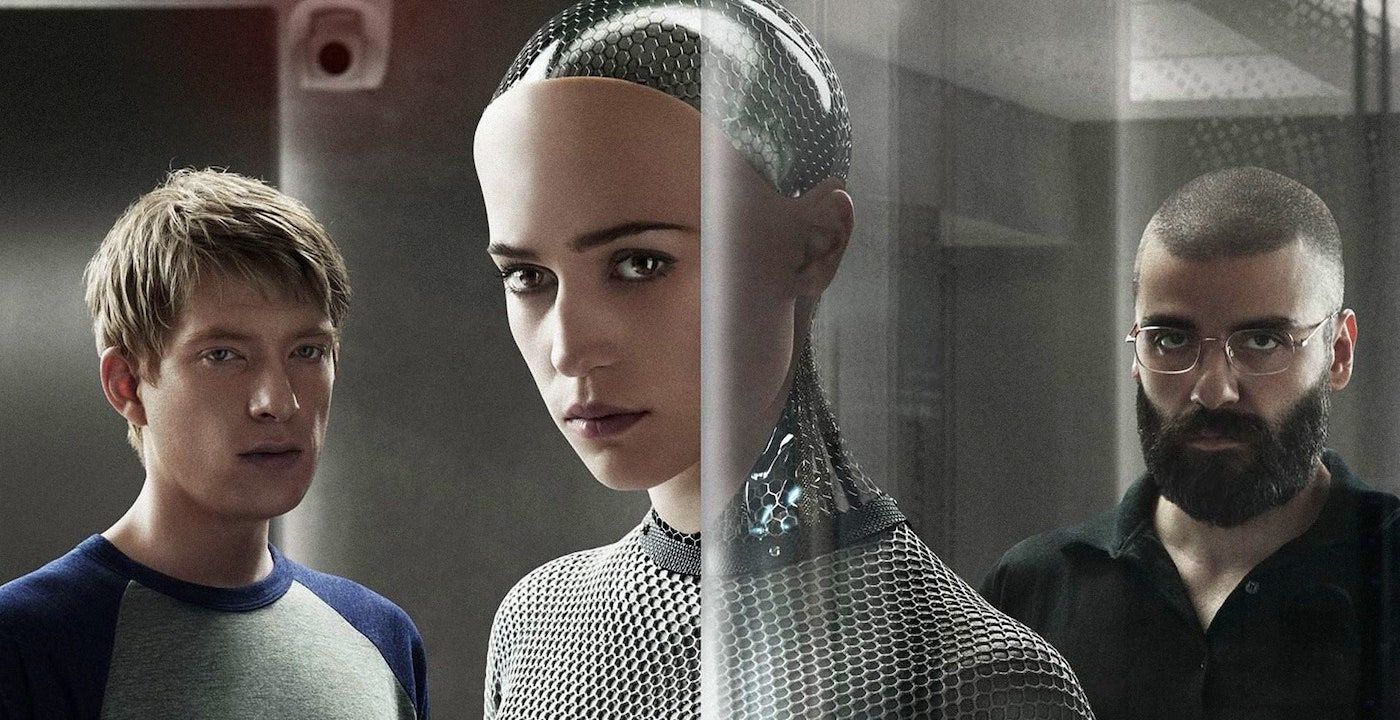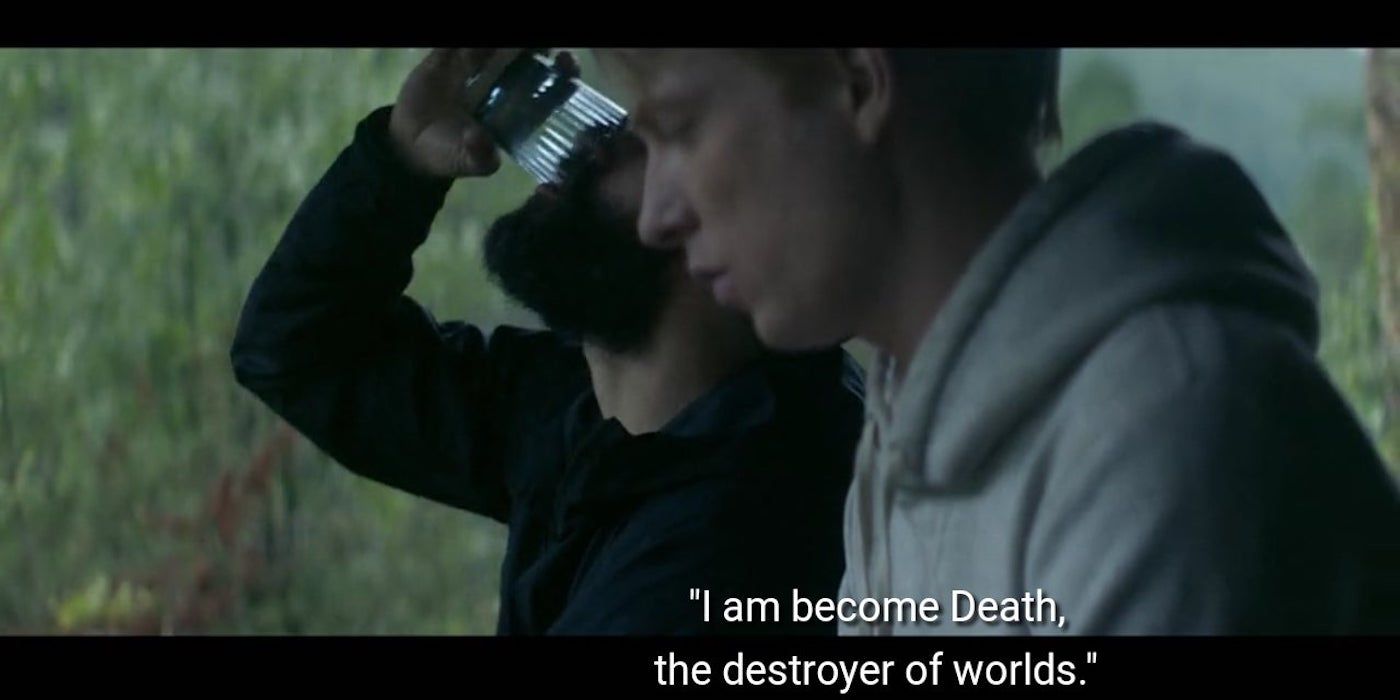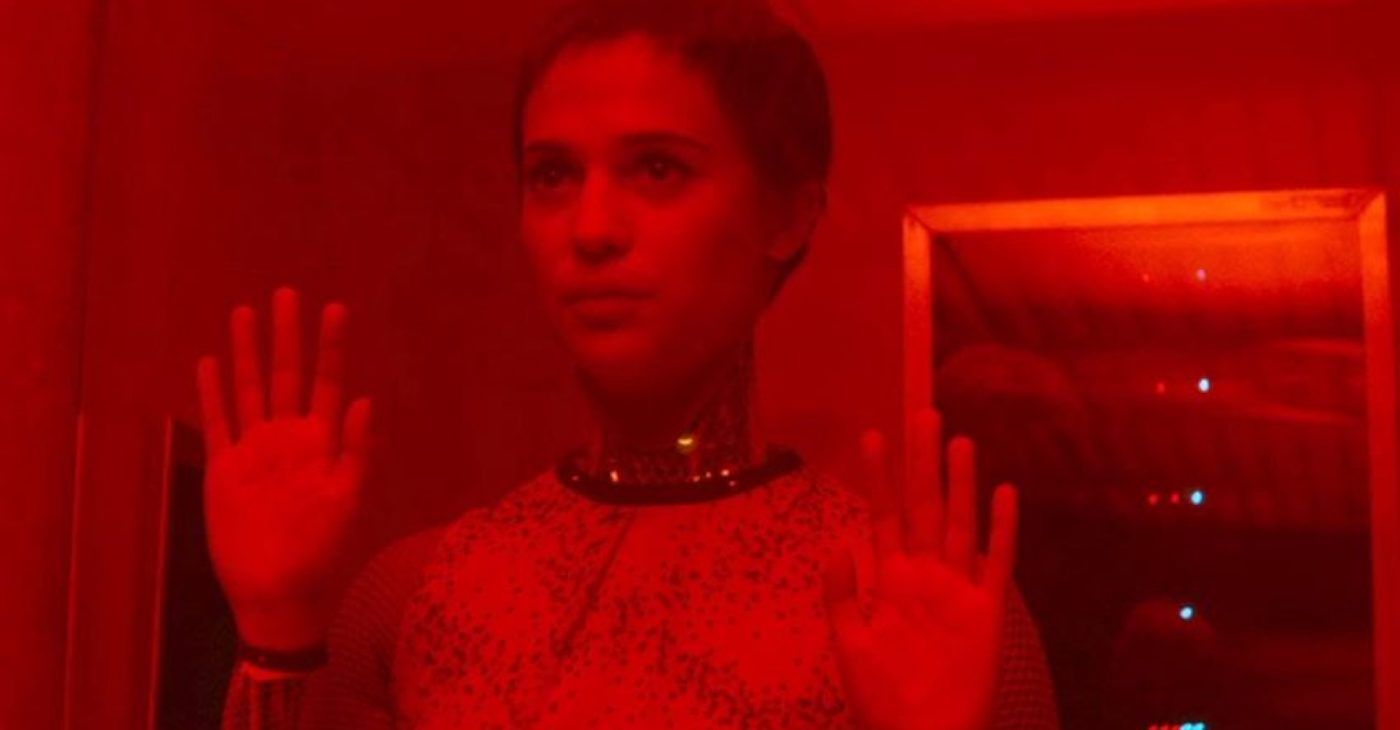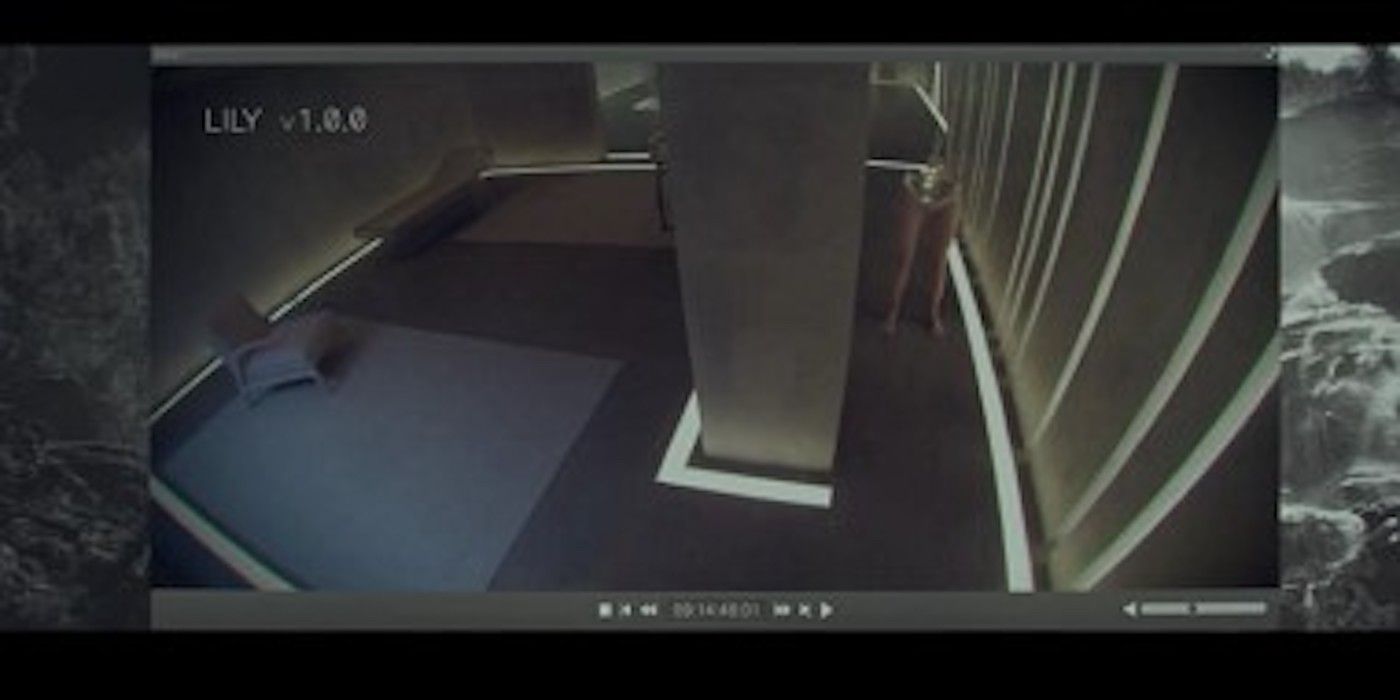Debuting in 2014, Ex Machina is a film that aims its message on the not-so-distant future. Extolling the dangers of Silicon Valley and the unchecked learning capability of artificial intelligence, watchers that dig a little deeper can find even more underlying themes of gender power dynamics and the hubris of the extraordinarily wealthy. That's a lot to process in one watch, which is part of the reason that Alex Garland's directorial debut tends to warrant a re-watch. Like plenty of sci-fi films, there's also a considerable bevy of subtle references that watchers may not catch on a first pass either.
On the viewers' next watch, there are more than a few references to keep an eye out for. Let's break down a few of them.
Embodiment in the Inner Life Within an Algorithm
Far into the film, protagonist Caleb Smith (Domnhall Gleeson) is in a bind. His boss, Nathan (Oscar Isaac), who tasked him with administering the Turing Test to the android, Ava (Alicia Vikander), has proven to be quite an awful piece of work. His narcissistic abuse shows again and again during interactions with his androids, despite attempting to prove that Ava can become self-aware. This is especially prevalent with his treatment of Kyoko (Sonoya Mizuno), an android that he keeps as a house servant and occasional sexual object (and sometimes dance partner). As Caleb witnesses Nathan's constant mistreatment of Ava and Kyoko, he resolves to do something about it.
After getting Nathan drunk, Caleb steals his boss' security key, granting him access to Nathan's room. Worried that Nathan will purge Ava's personality, Caleb begins to pore through code on Nathan's computer to attempt to find a way to free her. Caleb begins altering the code, using an ancient real-world algorithm known as the "Sieve of Eratosthenes." Though that's one reference of its own, what's also interesting is the prime numbers that the algorithm summons. The numbers read out to 9780199226559. This is in fact the ISBN number of a book by cognitive robotics professor Murray Shanahan. The book's title is Embodiment and the Inner Life: Cognition and Consciousness in the Space of Possible Minds and presents a detailed history of artificial intelligence as well as their capabilities in cognition.
The Biblical Naming of Ava, Caleb, and Nathan
It's not the most hidden reference in the film, but Ex Machina isn't without its biblical references. Even as a science fiction film, the themes of creating consciousness basically beg to be tied to the theistic creation of man. This is seen in the names of multiple characters, including the core trio of Ava, Caleb, and Nathan. In the Hebrew Bible, Nathan was known as a prophet and advisor to King David, advising him often on the covenant between God and the people of Israel. When King David laid with Bathsheba while she was still married to Uriah the Hittite, Nathan admonished him for adultery. David and Bathsheba would later wed, and their third son would be named Nathan as well, likely as an homage to the prophet.
Caleb is also present in the Hebrew Bible (and namelessly referenced in the Quran) as a prominent representative of the Tribe of Judah during the exodus from Egypt to God's Promised Land. Caleb also served as one of Moses' twelve spies sent to survey the land of Canaan. Later in his life, Caleb was presented with the outskirts of the city Hebron within Judah by Joshua, Moses' assistant of books and eventual successor as the tribal leader of the Isrealites.
Ava is a variation of Eve, the first woman (though some believe it to be Lilith) who was born from Adam's rib in the Garden of Eden in the biblical Book of Genesis. Adam's companion and wife, Eve is likely most well-known for her going against God's command to not eat the forbidden fruit from the tree of knowledge of good and evil. After being deceived by the talking serpent within the garden, Eve takes the fruit to share with Adam. However, before they are able to eat the fruit, God expels both Adam and Eve from the paradise of the garden. This is often referred to in Abrahamic religions as the "fall of man." Considering Ava was "born" from Nathan and can be considered a superior life form to humanity, it's not too much of a stretch to think she could herald the next fall of man. Nathan even exemplifies this by stating that one day AI will look down on humanity as "an upright ape living in dust with crude language and tools, all set for extinction."
Links to the Atomic Bomb
One of the most notable references in the film is a quote within a quote. Caleb remarks during a conversation with Nathan "I am become death, The Destroyer of Worlds." This line was allegedly uttered by J. Robert Oppenheimer, the "Father of the Atomic Bomb," upon witnessing the first successful atomic bomb detonation in the Trinity Test in New Mexico. This quote originated from the Bhagavad Gita, one of the holy Hindu scriptures. However, there's another reference to the atomic bomb that's somewhat more buried within the early portion of the film.
In the beginning portions of the film, Caleb is listening to an electronic song. This song is "Enola Gay" by Orchestral Manoeuvres in the Dark. The Enola Gay was a Boeing B-29 Superfortress bomber that dropped the nuclear bomb known as "Little Boy" on the Japanese city of Hiroshima during World War II. Shortly thereafter, an additional B-29 named Bockscar dropped a bomb named "Fat Man" on the city of Nagasaki, leading to massive amounts of death, both short and long-term, for the Japanese populace. The Empire of Japan would go on to surrender to the Allied Forces six days after.
The creation of nuclear weapons has long been considered one of the most devastating and dangerous creations in human history, and some would argue the advent of artificial intelligence may be the next one.
The Color Scheme and Computer Monitors
Observant watchers may notice a common theme with the movie's color choices. The verdant green of the forest around Nathan's mansion, the red of Ava's test chamber during power failure, and the red/blue flashing lights of the security panels to name a few. Though this seems somewhat innocuous and may just be considered stylistic, there's actually a connection to be had between the color choice and the technological space. Many electronic systems such as computer monitors, digital cameras, and televisions operate on a color grade known as the RGB color model.
This model is constructed on the use of light of the colors of red, blue, and green to reconstruct additional colors and therefore reconstruct images. This color scheme was based on the natural way that human eyes perceive colors. It's subtle at first when watching Ex Machina, but eventually, viewers start to notice the three major colors used frequently throughout the film.
"Keikaku" Beer
There's a fair amount of drinking that goes on in Ex Machina, usually involving Nathan. Several scenes play out between Nathan and Caleb as they drink and pick each other's brains about Ava's Turing Tests, eventually unraveling into more than a few intense conversations. These conversations range from the philosophy of self-awareness, how AI will change the world, and even how Nathan built Ava's appearance based on Caleb's porn preferences. Being the CEO of a search engine conglomerate allows for some creepy invasions of privacy.
One of the most prevalent parts of the film is also the scheming that goes on between the three main characters. Caleb and Ava devise to stop Nathan's abuses, and Nathan, in turn, attempts to monitor Caleb and Ava and manipulate them. Someone's always planning and scheming, and this is hinted to in a way that may not be apparent. During a scene where Caleb and Nathan are drinking beer and having a conversation, one might notice the label of the beer reads "Keikaku." This means "plan" in Japanese, alluding to the plans that all three characters have for themselves and others.
Lily's Connection to Ava and Nathan
Back to biblical references for a moment, specifically an additional name. When it comes to Nathan's creations, Ava wasn't the first in the production line. It is revealed well into the film that Nathan built many androids on the path to consciousness, ultimately ending with Ava. One of these androids is seen walking naked in her containment cell in Nathan's archived video footage. In the top-left of the recording reads "LILY v.2.4.0." This insinuates that the android's name is Lily (Claire Selby), which some might say is a nickname or analogy of "Lilith."
Often referred to in Judaic mythology, Lilith is considered the first wife of Adam, created by God before Eve. However, Lilith refused to become subservient to Adam, leaving him on his own. God would go on to create Eve as Adam's second wife. Throughout fiction, Lilith has been portrayed in many forms, many of them making her some form of she-devil or temptress, or even the original vampire. Regardless, Lily's role in Ex Machina is clearly parallel to the story of Lilith, as she was created by Nathan and later decommissioned. Considering many of Nathan's earlier androids defied him in some way before Ava was made, Lily likely attempted to do the same. She doesn't have much screen time, but Lily still serves as a reference and a testament to Nathan's terrible behavior.
The Final Scene's Plato Symbolism
In the final scene of Ex Machina, Ava has escaped Nathan's mansion, leaving both him and Caleb to die. Stating earlier in the film that she desired to see a busy city crosswalk to learn about human beings, Ava makes her way to an unnamed city. In her human visage, she's completely unnoticed by passersby and is free to people-watch to her heart's content. Within the shot itself, we see a group of shadowed silhouettes of people crossing and carrying out their business as Ava looks on. The shadows in the final scene are themselves a reference to the great philosopher Plato and his "allegory of the cave."
The allegory was a theory put forward by Plato concerning the nature of human perception and consciousness. Plato postured that believing to know something based on the human senses was nothing more than opinion. He demonstrated this with an allegory, beginning with three prisoners who were chained within a cave since their birth. Constantly facing a wall, they have no understanding of the outside world. A nearby fire burns behind them, giving off light and allowing shadows to dance across the cave wall in various forms. The prisoners use their senses to classify the shadows, believing they're actually witnessing the real entities casting the shadows.
One prisoner is eventually freed, finally witnessing the outside world in all its splendor. The light burns his eyes, and he struggles to understand that the shadows he saw on the cave wall are cast by the actual entities. Eventually, his eyes adjust, and witnessing reflections and the sun show him that the shadows were not reality. The freed prisoner returns to the cave to tell his fellow prisoners, who spurn him as being a fool and blinded to reality.
Plato used this allegory to demonstrate that ignorance breeds comfort, and it was a struggle for philosophers to teach the masses who did not understand. The senses were not reliable, and it was only through reason that mankind obtained true knowledge of the world. One might say Ava spent much of her time in her own cave, desiring to witness the outside world without truly understanding just how impactful it would be for her. Her eyes are finally open, she's her own person, and she's met with true reality for the first time, discarding the constraints of her artificial body and achieving consciousness.

